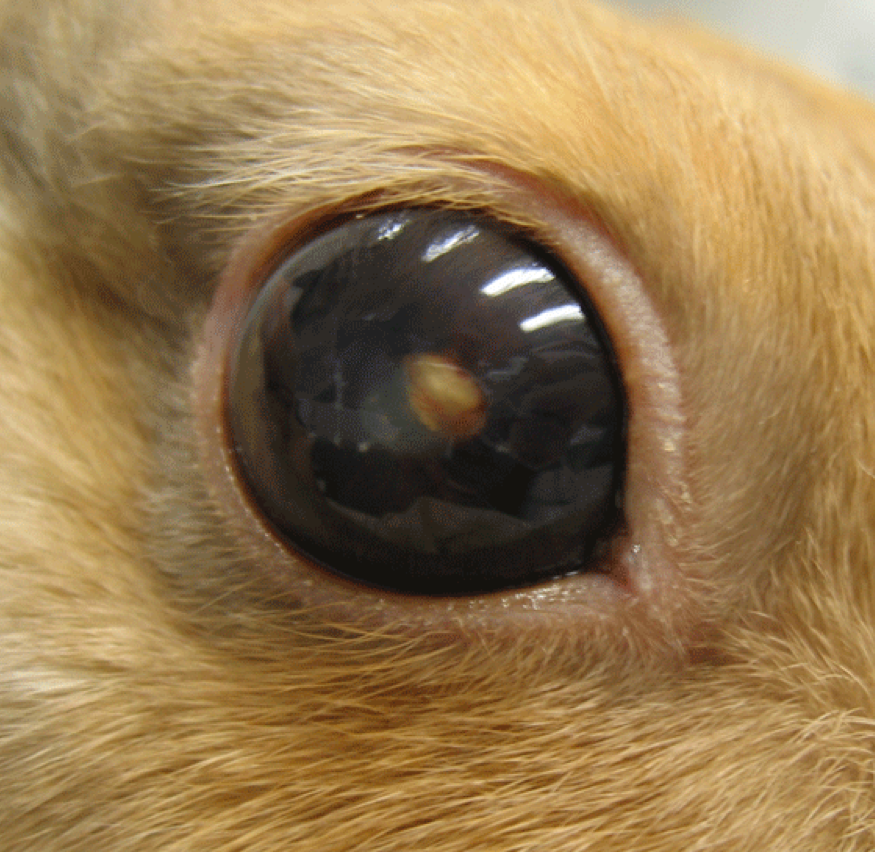Encephalitozoon cuniculi associated Phacoclastic Uveitis
E. cuniculi-associated phacoclastic uveitis is a recognized disease in rabbits, particularly dwarf rabbits. There is no sex predilection and the condition is often seen in younger rabbits. The lesion occurs after rupture of the lens capsule releases lens protein into the anterior chamber, which results in granulomatous uveitis; however, the posterior chamber usually remains unaffected. The mass originates at the lens capsule, and the inflammation is centered on the break in the capsule.
Historically, serum ELISA antibody titers were helpful in making a diagnosis; however, screening can now be accomplished through PCR on tissue, urine and feces samples, as well as cerebrospinal fluid and removed lens material. Simultaneous testing of IgG and IgM specific antibodies can give an indication of infection status as IgM antibodies indicate active infection. PCR can be done on lens material in cases of enucleation. Histologic demonstration of organisms gives a definitive diagnosis if samples are obtained.
Treatment options include antiprotozoal medication such as fenbendazole and in some cases topical corticosteroids, surgery to remove the affected lens and granuloma, or complete enucleation of the eye. In some cases the eye may atrophy without surgical intervention (phtisis bulbi). If the lesion is mild long-term oral antiprotozoal medication may be effective in preventing progression.
E. cuniculi-associated phacoclastic uveitis should be on the differential diagnosis list for rabbits presenting with ocular lesions and uveitis.




